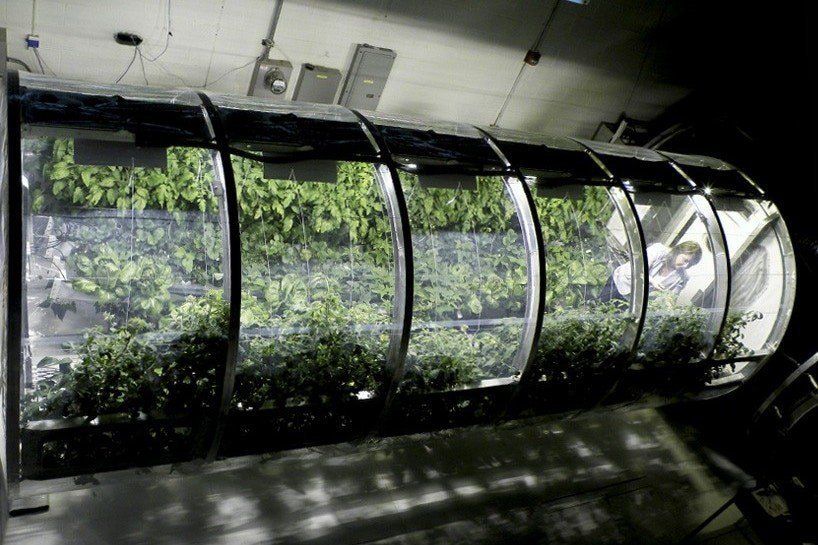NASA begin to test their Lunar or Martian Greenhouse
Work is in progress to plan future Hydroponics growth on other planets
Plants have successfully been grown hydroponically on the International Space Station and now long-term plans progress at the Kennedy Space Center in Florida. NASA
scientists are collaborating with a team from the University of Arizona
to discover suitable methods to support and sustain pioneering astronauts who will be working deep in space.
NASA researchers believe that among the many challenges facing human exploration a regular supply of fresh and good quality food is certainly one of them! An ongoing solution to this will be the use of Hydroponics systems to allow the cultivation of fruit and vegetables. Dr Ray Wheeler, the lead scientist atKennedy Advanced Life Support Research says that"We're working with a team of scientists, engineers and small businesses at the University of Arizona to develop a closed-loop system. The approach uses plants to scrub carbon dioxide, while providing food and oxygen."
The system being used is called a Biogenerative Life Support System. The prototype pictured above uses an inflatable greenhouse and supports the growth of plants. This growth then provides nutrition, water recycling, waste recycling and refreshes the volume of oxygen in the surrounding air. As Wheeler correctly noted, astronauts exhale carbon dioxide (as does any living human), then through the process of photosynthesis the plants inhale this and generate oxygen as a result. A continuous flow of water runs across the roots of the plants and nutrients are consistently added to the water. This could be water brought along on the exploration mission or water discovered close to a landing site.
Tests are being conducted on various seeds to give an indication of what should be taken along. "We're mimicking what the plants would have if they were on Earth and make use of these processes for life support," said Dr. Gene Giacomelli, director of the Controlled Environment Agriculture Center at the University of Arizona. "The entire system of the lunar greenhouse does represent, in a small way, the biological systems that are here on Earth."
The prototypes in use are of a cylindrical shape with an 6 metre length and almost 3 metre diameter. Computer models are used to simulate the environment. It is viewed that these greenhouses would need to be buried under the surface soil of the planet so as to eliminate the risk from the radiation levels. Plant lighting would be provided by LED's, by which successful hydroponic yields have already taken place. It is also possible that solar light could be captured and transmitted to the chambers via fibre optic bundles.
This work from NASA taking place here on Earth compliments the work already taking place in Outer Space
and gives further indications of how important hydroponics will become in the future...



